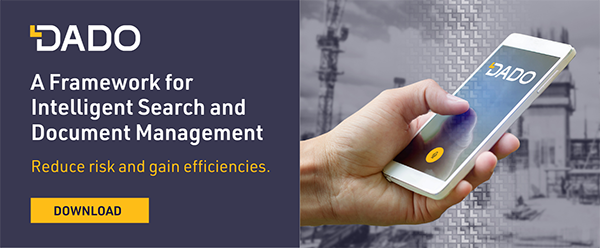Famed playwright and critic George Bernard Shaw (1856-1950) said, “The single biggest problem in communication is the illusion that it has taken place.” This is especially true in the construction industry, where significant information gaps can occur between the home office and field sites.
Failed communication can result in work delays, rework, morale issues, and, more importantly, put lives in danger. A project can have teams of different people and specialties working on the site all the way through the Close-Out Phase.
According to the Project Management Institute, poor communication is to blame for one-third of project failures. Additionally, minimally effective communications result in only 37% of projects being completed on time and 48% completed within budget. Compare this to highly effective project communications with 71% completing on time, 76% finishing within budget, and 80% meeting their goals.
In many of these cases, the home office is unaware “the ship is off course” until it is too late to correct. A document management system (DMS) can help bridge the information gap between the home office and the field to mitigate risk and avoid claims.
Why is it important to connect the field and the office?
Better communication and documentation between the field and the office can mitigate risk and avoid claims for contractors. Keeping a record of changes provides irrefutable documentation to support work completed in the field. Documentation is crucial for contractors to get paid for work completed.
Also, tracking unforeseen jobsite conditions can help a contractor. Many contracts have begun to add liquidated damage clauses. With these clauses, contractors assume more risk and delays will cost them. Documenting the causes of delays and the number of lost hours will help mitigate the risk from liquidated damage claims.
“Phone home”: Using DMS to improve communication with Headquarters
A construction industry saying goes, “You don’t get paid for the work you do; you get paid for the work you document.” In ye olden days (a.k.a. before the Internet), a general contractor needed to maintain rigorous, paper-based records of the job. Small forests fell to fill binders full of paper to record communication. However, to the delight of many a pine tree, digital communications and cloud-based technologies have taken over.
To avoid delays and mistakes, construction industry communication must:
- Send information in real-time,
- And maintain a complete record of communication.
For a project to have the best chance at success, the Virtual Design and Construction Manager (VDC), Project Manager, Field Superintendent, Accounting, and Executive must literally be on the same page at the same time while working at different locales. Their relationship to each other is interdependent to realize greater project efficiencies and better risk mitigation. There is no better tool to make this happen than a cloud-based DMS. If used properly between the home office and the project site, the DMS help eliminate wasted materials and the man-hours needed to fix mistakes.
Change The Mindset to Change Communication Habits
Separated by physical aspects of the office and the job site, one of the most significant divides in construction communication in the field and the office. Many “old school” field superintendents and foremen do not file daily reports and photos to the home office. Others may think it is “busy work” and don’t want to be bothered. In truth, the practice of daily reports and photographs used to be more of a hassle.
But today, with the prevalence of VDC Managers responsible for aiding field personnel by maintaining accurate information in a database or DMS, real-time updates are critical to avoiding information errors. In 2018, FMI Corporation reported document and information mistakes that cost the construction industry more than $31.3 billion.
A cloud-based DMS allows field personnel to quickly photograph and annotate notes, which can be tied back to project documentation. This single best practice goes a long way to bridging the information gap between the field and headquarters.
Aside from photos, a DMS can also store videos made at the project site or at the home office, which can be immediately shared to assist with training, compliance issues, or other necessary information.
Key Takeaway
Executives and field workers are busy moving a construction project along. Communication among the different locales should be cloud-based and easy to use, such as a Document Management System. While many contractors and subcontractors have yet to adopt this technology, those that have been experiencing tremendous time savings as well as better risk mitigation, which begins with proper document control.
CATEGORIES
- Construction Technology (23)
- Construction Document Management (14)
- Construction Document Search (13)
- DADO (8)
- Document Management Systems (8)
- Intelligent Search (6)
- Smart Forms (4)
- intelligent document search (4)
- File Search (3)
- Insider (3)
- Productivity (3)
- Search Engines (3)
- VDC (3)
- tech friction (3)
- Cost Control (2)
- Ctrl F (2)
- Customer Stories (2)
- Digital Process (2)
- Opinion (2)
- Risk Management (2)
- Smart Documents (2)
- Virtual Design and Construction (2)
- field (2)
- integrations (2)
- lean construction (2)
- safety compliance (2)
- Collaboration (1)
- DMS (1)
- IGI (1)
- OSHA (1)
- Optical Character Recognition (1)
- Project Management (1)
- Safety (1)
- TAUC (1)
- document administration (1)
- index documents (1)
- mechanical engineering (1)
- rework (1)
- voice driven (1)
Archives
- October 2020 (5)
- February 2021 (4)
- April 2021 (4)
- June 2021 (4)
- July 2021 (4)
- July 2019 (3)
- September 2020 (3)
- November 2020 (3)
- December 2020 (3)
- January 2021 (3)
- March 2021 (3)
- May 2021 (3)
- August 2021 (3)
- March 2022 (3)
- May 2022 (3)
- October 2021 (2)
- January 2022 (2)
- February 2022 (2)
- March 2020 (1)
- April 2020 (1)
- July 2020 (1)
- August 2020 (1)
- September 2021 (1)
- November 2021 (1)
- December 2021 (1)
- April 2022 (1)
- July 2022 (1)


